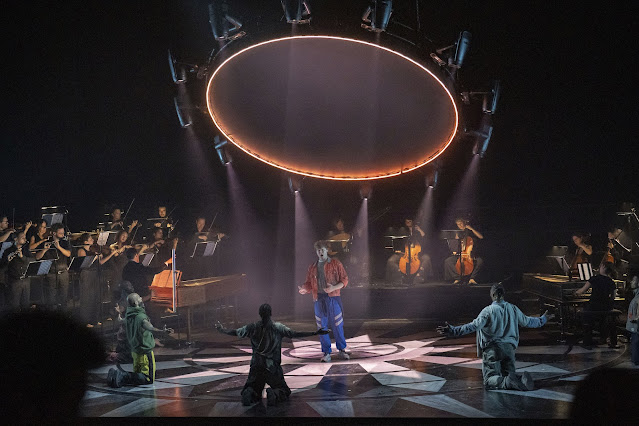 |
| Rameau: Les Indes Galantes – Andreas Wolf, Cappella Mediterranea, Chœur de chambre de Namur, Structure Rualité, Leonardo García-Alarcón – The Grange Festival (Photo: Richard Hubert Smith) |
Rameau: Les Indes Galantes; Laurène Paternò, Ana Quintans, Alasdair Kent, Andreas Wolf, Cappella Mediterranea, Chœur de chambre de Namur, Structure Rualité, director: Bintou Dembélé, Leonardo García-Alarcón; The Grange Festival
Reviewed 1 July 2025
Rameau’s ballet héroïque reinvented as vivid music theatre in a collaboration between period performance and hip-hop-inspired dance at, astonishingly, the works first major UK staging
Full-scale productions of Rameau’s major operas in the UK remain vanishingly small. Garsington Opera did Platée last year and Glyndebourne Opera presented Hippolite et Aricie in 2013. With Castor et Pollux making an appearance at ENO in 2011, and Dardanus at ETO in 2017. That’s not a lot.
Partly, it is a problem of economics. Handel and Vivaldi’s operas, whilst large-scale and somewhat problematic on the modern stage, were written for commercial opera houses, they usually require just a handful of major singers, an orchestra and perhaps a single set. Rameau was writing for the rather more lavishly funded opera in Paris, he presupposed a large orchestra, chorus and dancers, in addition to large-ish casts and plots that call for lavish scenic changes. Whereas in France, opera companies seem to be up to the challenge that Rameau’s operas present, this is not the case in the UK.
Rather imaginatively, for its final operatic staging of the season the Grange Festival has partnered with a French company to bring their staging of Rameau’s Les Indes Galantes. Amazingly this seems to be the work’s first full staging in the UK.
We caught the second of three performances at the Grange Festival on 1 July 2025. Leonardo García-Alarcón directed his ensembles Cappella Mediterranea and Chœur de chambre de Namur with a staging by choreographer Bintou Dembélé featuring soloists Laurène Paternò, Ana Quintans, Alasdair Kent, Andreas Wolf, and Dembélé’s dance company, Structure Rualité. Lighting was by Benjamin Nesme and Charlotte Coffinet,
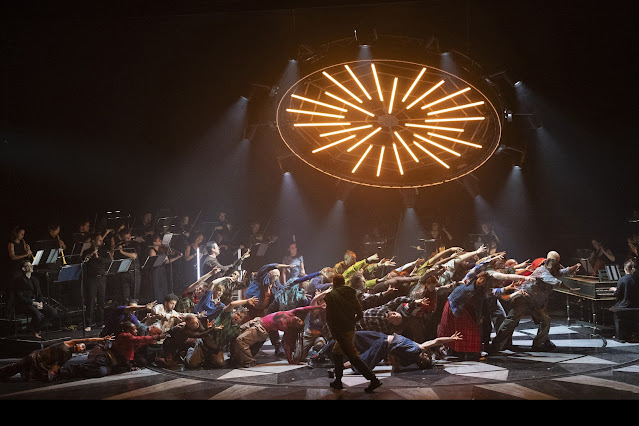 |
| Rameau: Les Indes Galantes – Cappella Mediterranea, Chœur de chambre de Namur, Structure Rualité, Leonardo García-Alarcón – The Grange Festival (Photo: Richard Hubert Smith) |
The work has a somewhat complex history. The Prologue and first two entrées were staged in 1735, with a third entrée being added during the run. It was only in 1736 that the fourth entrée was added and the third achieved its final form. From then on, until 1773, the work was never absent from the Paris Opera repertoire, either complete or in part. The work then had to wait until 1952 for the next staging at the Paris Opera, with orchestrations by Paul Dukas!
Often, the joining forces between a musical company and a dance company can mean that the significant role non-singing expression takes is made more meaningful. This is what happened at the performance of Purcell’s Fairy Queen at last years BBC Proms when Les Arts Florissants joined forces with Mourad Merzouki’s Companie Käfig to merge period practice and hip-hop inspired dance [see my review]. The Grange Festival production of Rameau’s Les Indes Galantes had a similar feel about it.
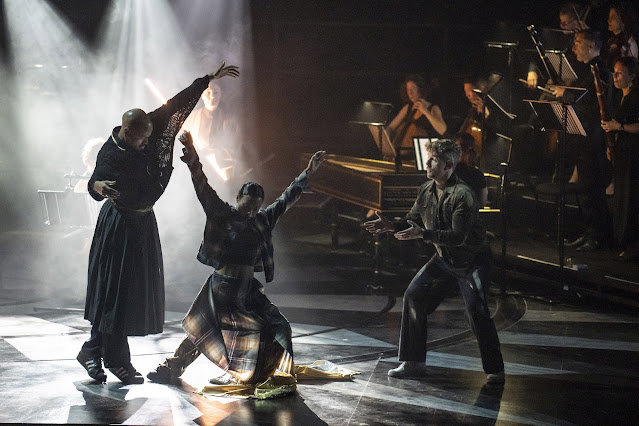 |
| Rameau: Les Indes Galantes – Alasdair Kent, Cappella Mediterranea, Chœur de chambre de Namur, Structure Rualité, Leonardo García-Alarcón – The Grange Festival (Photo: Richard Hubert Smith) |
The work itself was trimmed, I reckon that we perhaps lost around 30 minutes of music (which still left us with two and half hours of music), including quite a number of purely dance movements. There was no set, the orchestra was spread out on platforms towards the rear of the stage, with singing and dancing taking place further forward. Solo instrumentalists would be brought forward and there was a sense that the players were part of the whole presentation. Also, the auditorium was used so that at the beginning of the prologue, Ana Quintans’ Hebe was sitting in the auditorium, sometimes the chorus was arrayed around the stalls and sometimes the dancers, whilst in the second entrée Laurène Paternò’s Phani was in the gallery addressing Alasdair Kent’s Carlos on stage.
Bintou Dembélé’s dance is based around contemporary street styles such as hip-hop and the moments when the dancers were let off the leash, such as the final Chaconne were astonishing, but the staging was less about dance and more about a total ensemble. In the volcano scene in the second entrées, singers and dancers joined together as one ensemble, the chorus singing and dancing alongside the members of Dembélé’s company. The result was an impressive piece of music theatre that, rather than mixing singing, dancing and stage spectacle, combined the three into one vision. That of Bintou Dembélé.
There were frustrations. Lighting relied on a circular right suspended from the stage (looking not unlike a space-ship) along with hand-held lights and the odd spotlight. Clearly this was intended to be portable, and there was something of the rock concert spectacular about some of the lighting effects, but more problematically the results could often be frustratingly dark, meaning instrumentalists and singers performed in gloom. The placing of the orchestra so far up-stage seemed to inhibit the full, rich sound of Rameau’s orchestrations in the ensemble passages. García-Alarcón was using an orchestra of some 30 players and I rather wished the sound had had more presence, as it was the singers were rather more prominent in the mix.
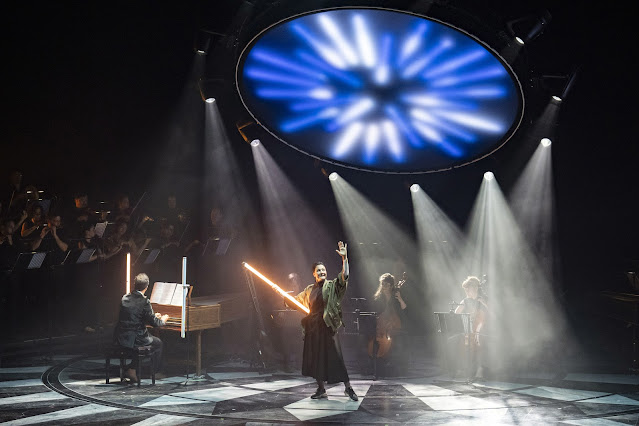 |
| Rameau: Les Indes Galantes – Ana Quintans, Cappella Mediterranea, Chœur de chambre de Namur, Structure Rualité, Leonardo García-Alarcón – The Grange Festival (Photo: Richard Hubert Smith) |
Conventional narrative was not Dembélé’s main concern. There was little sense of character development, nor were the dance episodes used to expand the drama, so what we got was a series of dramatic vignettes. Thankfully the four hard-working singers, Laurène Paternò, Ana Quintans, Alasdair Kent, and Andreas Wolf, seemed to be able to capture the moment, and the lovers’ trials in the first, second and fourth entrées were strongly etched, whilst the third entrée was cut to something more abstract. Though the fact that they all wore the same street clothes for the entire evening mitigated against individual characterisation, whilst in the final entrée the two men played a total of three lovers between them with Andreas Wolf playing two rivals, one successful and the other not. The dramaturgy here might have been confusing but vocally this was strong. Paternò and Quintans played the series of female lovers, though it was Quintans incarnation as Hebe in the prologue that was the most memorable. Alasdair Kent has quite a heroic sound, bringing a rough virility to some of his performance but never less than engaging, whilst there was a real vividness to everything that Andreas Wolf sang.
Leonardo García-Alarcón took a highly active role in the whole production, his conducting needing to communicate not only with everyone on the stage, but those in the auditorium too and his range of gestures had a vividly plastic quality that seemed to go beyond simple practicality.
The number of pure dance moments was surprisingly small, and few ensembles matched the astonishing brilliance of the final Chaconne. Instead, Dembélé seemed to use quite a lot of walking about to music, merging singers and dancers into a single whole.
Intriguingly, you felt that Dembélé was also trying to tell another story. Dance was not used to extend Rameau and Louis Fuzelier’s original dramaturgy but to introduce another one. Certainly the volcanic eruption in the second entrée was vividly done, but elsewhere there seemed to be another story. This was most noticeable at the end of the work where the final chorus’ Chaconne as ceremony of peace did not conclude the work, but there was a further solo where the chorus and dancers seemed to turn on each other with stylised violence, and then we finished with the orchestra alone, as if saying that Rameau’s music alone was enough.
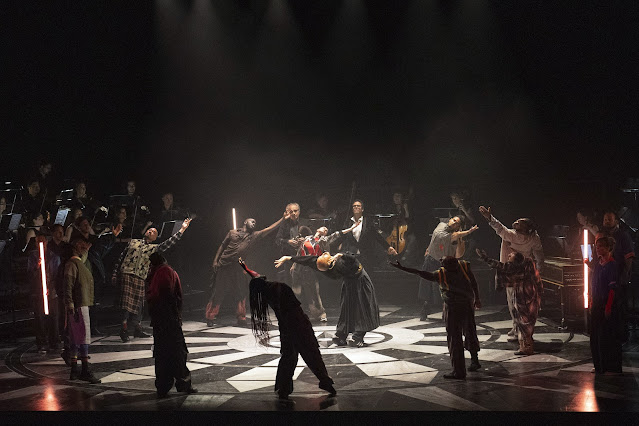 |
| Rameau: Les Indes Galantes – Cappella Mediterranea, Chœur de chambre de Namur, Structure Rualité, Leonardo García-Alarcón – The Grange Festival (Photo: Richard Hubert Smith) |
And it was.
Whatever you thought of the performance, whatever the frustrations of the staging, there is no doubt that the evening brought Rameau’s music alive with a vivid theatricality that a more conventional treatment might have missed.
The blog is free, but I’d be delighted if you were to show your appreciation by buying me a coffee.
Elsewhere on this blog
- Robert & Clara: Stephan Loges & Jocelyn Freeman at SongEasel – concert review
- A vivid sense of style & stagecraft with some of the best Handel singers around: Rodelinda at Garsington – opera review
- A different focus: Timothy Ridout in Mozart & Hummel with Academy of St Martin in the Fields plus Rossini & a Weber symphony – concert review
- From Handel to Verdi & beyond: Soraya Mafi on singing in Handel’s Saul at Glyndebourne, expanding into bel canto & Bernstein – interview
- An alternative way people can encounter classical music: Baldur Brönnimann & Felix Heri introduce Between Mountains Festival – feature
- The BBC Symphony Orchestra’s visit to this year’s Aldeburgh Festival – concert review
- Brilliant reinvention & razor sharp take-down: Scottish Opera’s double-bill pairs Gilbert & Sullivan with Toby Hession’s brand new comedy – opera review
- A trio of concerts at this year’s Aldeburgh Festival highlights the diversity of music to be found on the Suffolk coast – concert review
- That was quite a party! Paul Curran’s production of Die Fledermaus at The Grange Festival is a terrific evening in the theatre – opera review
- Modern resonances & musical style: Richard Farnes conducts Verdi’s La traviata at The Grange Festival with Samantha Clarke & Nico Darmanin – opera review
- Home
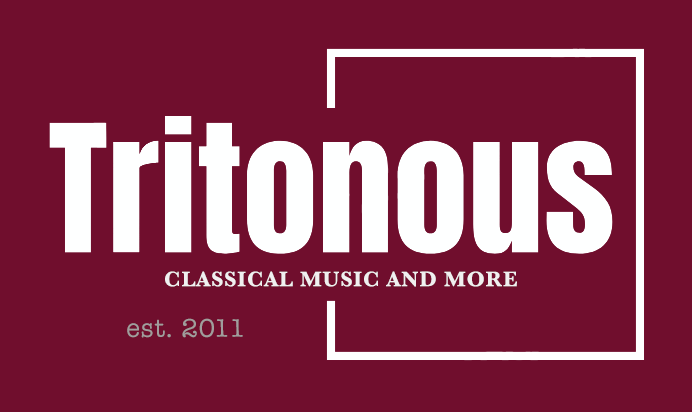

.jpg?w=998&resize=998,665&ssl=1)







